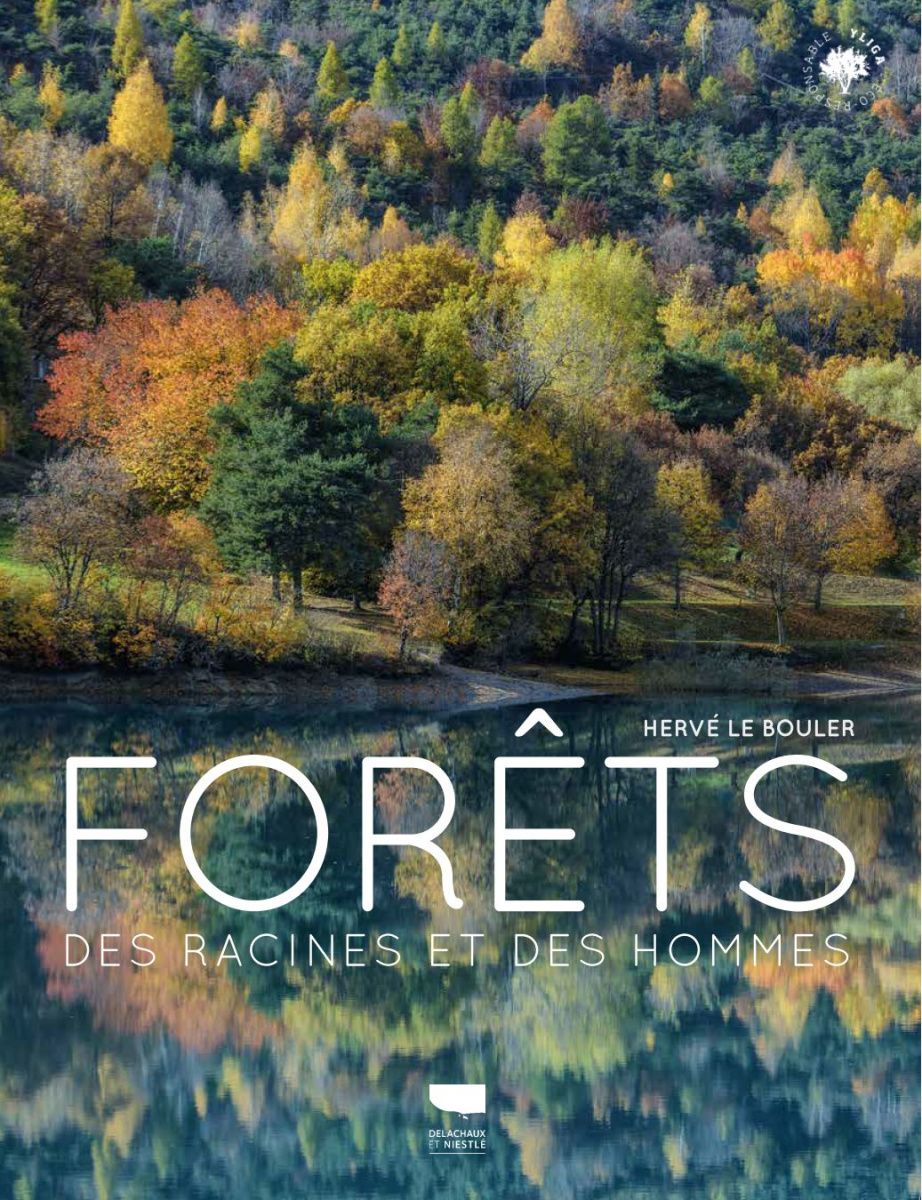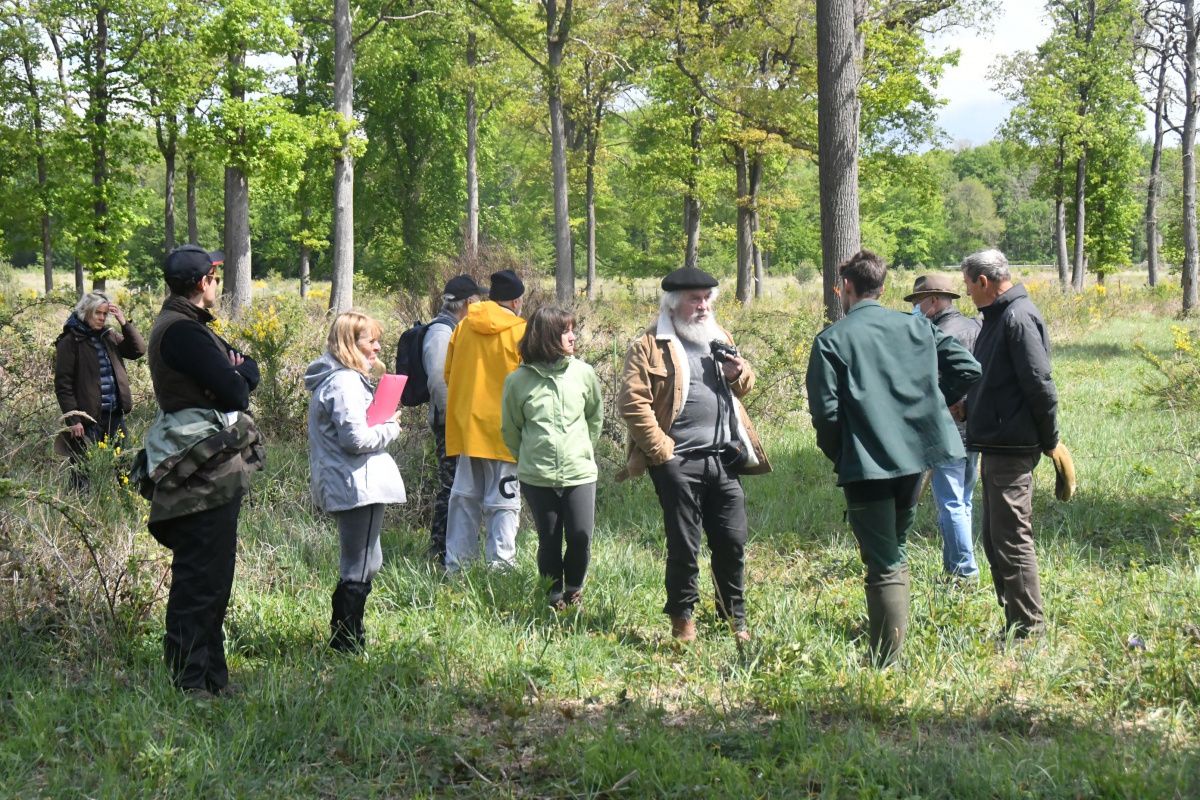A story to travel from the forests of yesterday to those of our days
A specialist in the impact of climate change on forests in France, Hervé Le Bouler is currently scientific advisor to Daisy Copeaux, director of the Domaine du Château de Chantilly forest. He has not only conducted research for the ONF and forestry institutes, but has also led the forestry network of France Nature Environnement. Finally, he directed the National Conservatory of Forest Biodiversity for 36 years.
Yet, surprisingly, the book is largely a collection of expert advice.
The story is primarily one of a long tour through our regions of France. Through this account, the author takes us to the forests of today - those of the Mediterranean area, the Jura, the Haute-Corrèze, the Massif Armoricain, the Landes, or even Verdun and Fontainebleau.
He makes us follow the trail of yesterday's forests towards this "other world" led by humans. Over the past 6,000 years, humans have profoundly modified their way of life: plots of land cleared for agriculture, cultivated fields, meadows for livestock, wood harvesting, for example - which is not without consequences.
Hervé Le Bouler thus questions the need to reinvent the profession of forester and its relationship with society.

A cautionary tale: "9,000 years of climate stability just ended in the 20th century".
The average climate will become warmer. As a result, trees will suffer even more from water availability problems. Weakened, they will also be more susceptible to pests and diseases. In addition, extreme and unpredictable events will multiply.
In such a chaotic context, crisis management will precede wood production and harvesting alone. Managing forests will then consist first and foremost in ensuring the maintenance of functional, resistant, and adaptable forest ecosystems in the face of increasingly frequent and robust hazards.
A book inviting foresters, elected officials, scientists, companies and citizens to join forces
When the climate remained relatively stable, the future of the forest was predictable. Modern forest management could be based on the knowledge of natural processes and the long-term impacts of human intervention in the forest.
However, since man and the forest are linked, we have left this stability.
A huge silent and permanent storm has been declared: we are heading beyond isolated climatic accidents.
Fires, droughts, storms, large-scale dieback, diseases and insect pests: these events, which have become too regular, question our practices,
Some events show a loss of local adaptation of certain species. It would then be necessary to consider supporting the migration of tree species to the north in view of climate change and to choose the appropriate species.
Other issues are emerging. For example, one wonders whether forests should be left to grow naturally and without management or, on the contrary, whether strictly controlled plantations should be preferred. Or again, how and with whose help to manage private forests - the vast majority of the French forest area.
For Hervé le Bouler, foresters, elected officials, scientists, companies and citizens must join forces to question and change our vision of the forest, its behavior and its management.
An optimistic account to propose concrete solutions
Hervé Le Bouler proposes several options to counteract these uncertainties:
1° Increase the diversity of tree species, abandon monoculture
Forest cultivation is still too much subject to the tendency to monoculture. Moreover, climate change and the explosion of new parasites are becoming a significant handicap, sometimes even deadly for the forest. A new pest, a hurricane, or a few hotter and drier years, and a whole regional forest species is threatened to disappear. It is, therefore, urgent to increase the diversity of tree species.
2° Relying on the capacity of existing trees
Let us count on the French forests' 2 to 3 billion adult trees.
They reproduce. Each one generates several hundred seeds each year. Everywhere. Spontaneously. Each of them could become a new tree with a different genetic heritage, which will favor a quick adaptation to a new environment. There will also be survivors who have been selected based on their ability to resist heat waves, droughts, and pest attacks that will cause the death of most seedlings.
They will transmit this resistance to their descendants. The local species will also have adapted to its new context. Moreover, thanks to thousands of years of cohabitation with other species of the forest, animals, plants, and mushrooms, all neighbors, more or fewer cousins, will form a balanced community made of this long cohabitation. As a result, the local trees will be much less sensitive to the damage that other species could produce in the form of disease or insect outbreaks.
3° Planting and promoting assisted migration of species
Natural regeneration will not be enough, and it will also be necessary to plant.
This means mixing species, sizes, and ages. This requires ensuring that introducing these new species will not sow disorder in the communities of species already living in the forest.
Hervé Le Bouler promotes adaptation methods.
The questions they raise concern the assisted migration of species to adapt ecosystems to climate change. He proposes to seek out these new species as a priority in the countries of Western Europe and the Western Mediterranean basin. These species have crossed and cohabited for hundreds of thousands of years following post-glacial migrations and recolonizations and in the southern refuges during the ice ages. They then maintain, over very long periods, relationships of neighborhood and cohabitation. Now, through selection, they are inscribed in their genetic heritage by minimizing, for the heirs of this heritage, the risks of severe ecological imbalances with the species living in their company. The genetic memory of their co-adaptation could thus be transmitted between generations. Moreover, by hybridizing readily with local species from the second generation onwards, close species from warmer regions could also gradually spread adaptation genes among local species. This will accelerate the continuous adaptation of the entire forest ecosystem to new climatic contexts.
4° Taking care of the whole forest with some general management principles
The forestry profession must reinvent itself.
Hervé Le Bouler then lists a few general management principles that can be applied everywhere, particularly the fact of adapting beneficial management practices that will help species maintain themselves.
For example, the forest generates its microclimate mainly through the shade the trees cast. Avoiding soil exposure to bare light prevents temperature rises that destroy seedlings - in addition, protecting forest soils, which constitute a water reserve for plants when insufficient rainfall, supports an entire ecosystem. In this context, many tracks are to be explored and developed concerning, for example, the ground pressure of the machines, the technique of exploitation with low impact on the ground as the cable skidding, or still, the use of tools such as the exoskeletons or the return to the horse skidding for the woods of qualitý whose value can absorb the additional cost.
A story illustrated by beautiful photographs, expert advice, and fine intuitions... this book will serve us well. Beautiful and optimistic ideas that will accompany us in thinking about the regeneration of forests.
